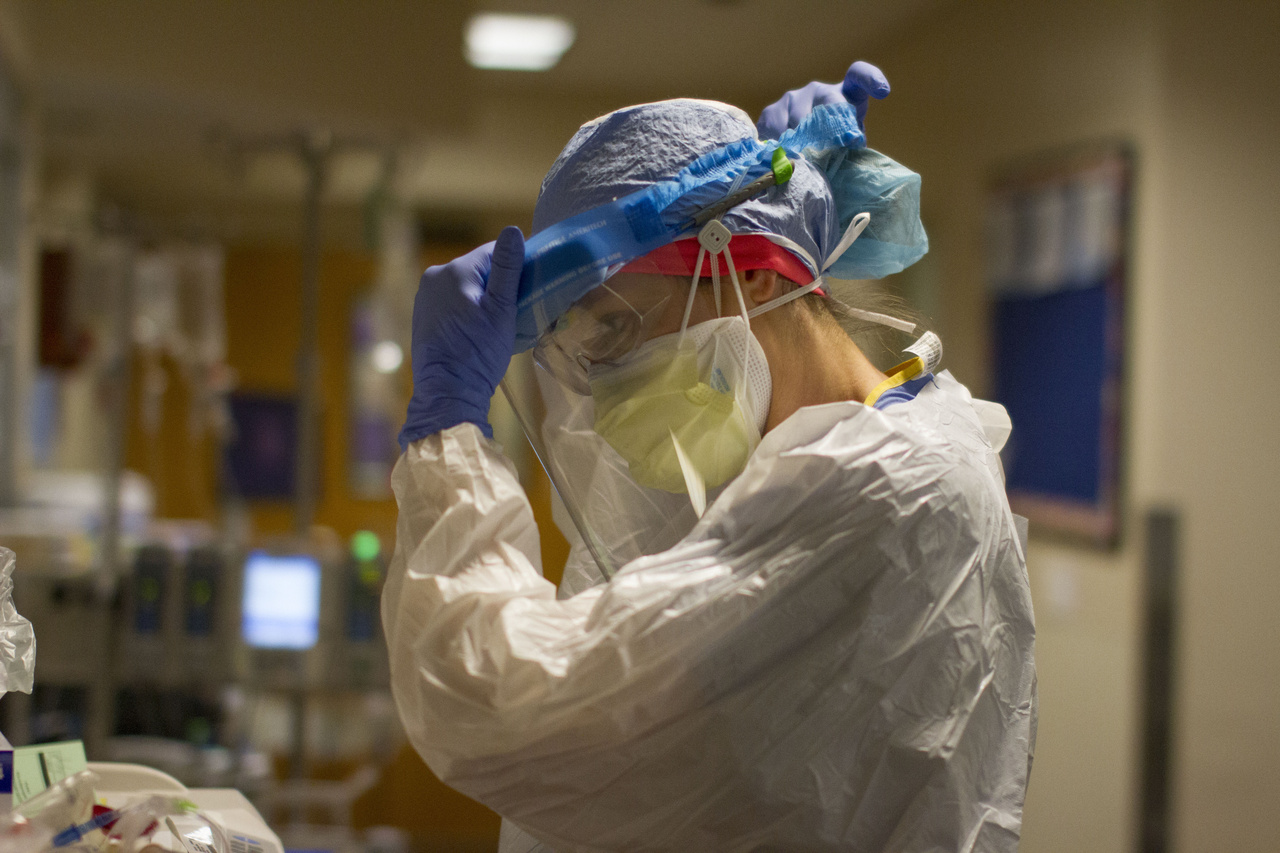The shortage of nurses was an issue long before the pandemic threw the industry into turmoil, but the stresses of the past year and a half have put more pressure on caregivers, exacerbating the issue. The shortage is due to the inability to educate enough nurses, an increasing need for healthcare workers, and a quickly aging workforce, but at UT Arlington, they are working to stem the tide.
More than half of all nurses are 50 years of age, and as they retire, they will not only be out of the workforce but will need increasing healthcare themselves. At the same time, during the 2019-2020 academic year, nursing schools turned away more than 80,000 qualified applicants, according to the American Association of Colleges of Nursing.
The Institute of Medicine and the Robert Wood Johnson Foundation’s study on the future of nursing found that baccalaureate-prepared nurses would need to increase by 80 percent, and the number of nurses with doctoral degrees will need to double. The current workforce is falling short of these marks, as only 64 percent of the current nursing workforce has a bachelor’s degree.
Finally, wages for registered nurses are falling behind wage growth, making the occupation less attractive. The pandemic and the challenges that faced nurses at work and childcare issues pushed more out of the workforce. My mother, who is still working at a psychiatric emergency center in Austin at 70 years old, had to don PPE, walk down a flight of stairs to triage the patient outside, head back in and take it all off, and enter the patient into the system all day long, for every patient. It wasn’t easy for nurses before, and the past year and a half have been enough to make many question if this is the career for them. “I am concerned that the pandemic has exacerbated what already was known from studies and models that were done that the nursing shortage is getting worse,” says Dr. Elizabeth Merwin, Dean of the College of Nursing and Health Innovation at the University of Texas at Arlington.
Nursing educators can only address specific aspects of the issue, but many are working hard to expand access, despite the limitations. At UT Arlington, which is the state’s largest producer of baccalaureate registered nurses, they take between 200 and 220 new students every spring and fall but have thousands of qualified applicants they turn away every year.
“It is heartbreaking to talk with individuals who are perfectly qualified and that we would love to open the door and say yes, we can admit you right now, but we have constraints on resources that limit the number of students that we can take,” Merwin says.
Programs like UT Arlington are limited by the number of professors who can teach the classes, the facilities willing to have students in their halls, preceptors to help guide the students as they gain clinical experience. It isn’t easy to build up these resources. “It takes a couple of years of relationship building to be able to develop a very deep partnership,” Merwin says of developing relationships with new hospitals that can help educate students.
UT Arlington has recently added a summer cohort of 50 students to expand their program and has recently added rural hospital partners in North Texas as clinical rotation sites. Partnerships like this allow students who live in rural areas to be educated in their communities while expanding the ability of the school to train more nurses.

UTA is also expanding its virtual training abilities, allowing nurses to get clinical experience without being in a hospital. The UT Arlington College of Nursing and Health Innovation Smart Hospital houses the nursing and social work programs. It simulates patient interaction and other situations to help prepare nursing students for the real thing. The simulation hospital includes an emergency department, intensive care unit, surgical unit, labor and delivery, neonatal ICU, and more. These programs provide increased access to clinical training and were incredibly impactful during a pandemic where they allowed students to train without exposing them to COVID-19.
In reaction to the aging population, UTA is also putting additional resources toward training in gerontology, offering two different nurse practitioner programs and continuing education for nurses who want more training in what is sure to be a growing field.
UT Arlington is doing what it can, but it will take health systems, individuals, other nursing programs, and policymakers to address the looming shortage. Merwin loves seeing the healthcare system come together to support expanding opportunities for nurses, but nows it is a long battle ahead. “There’s been a lot of support throughout the healthcare system and beyond for increasing the nursing workforce, and a lot of these efforts have made a difference,” she says. “But it’s going to be an issue that’s going to challenge all of us for many years as well as in the near future.”





